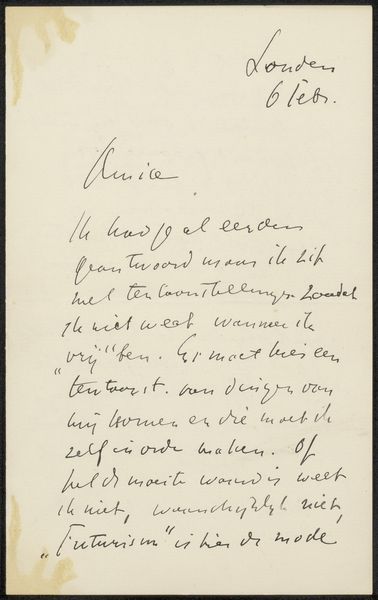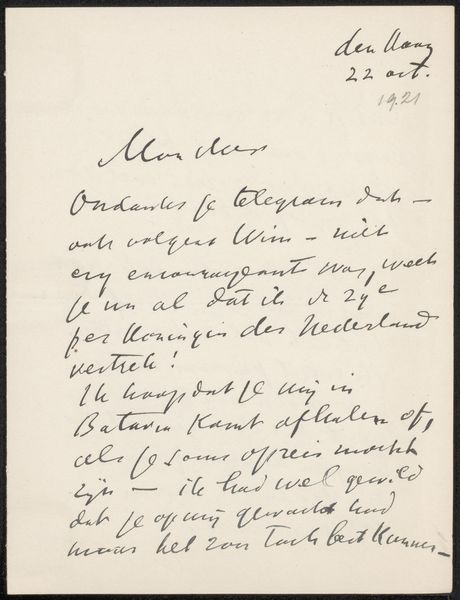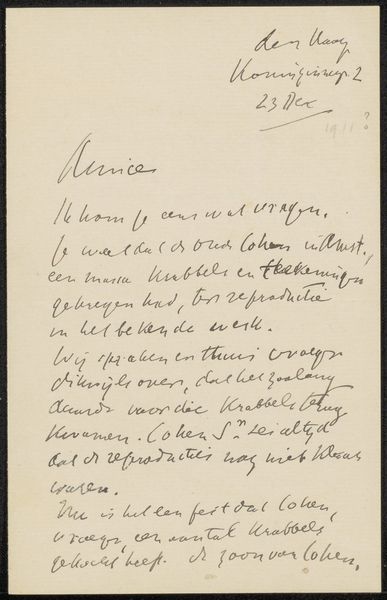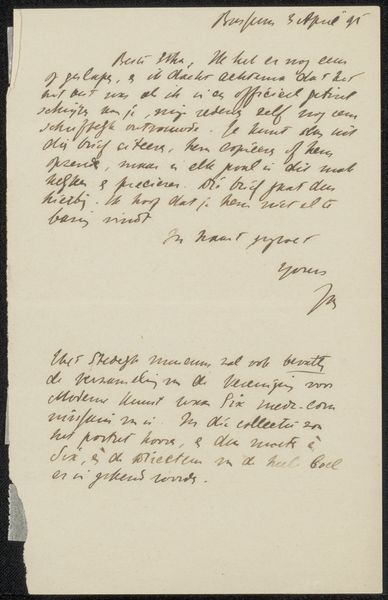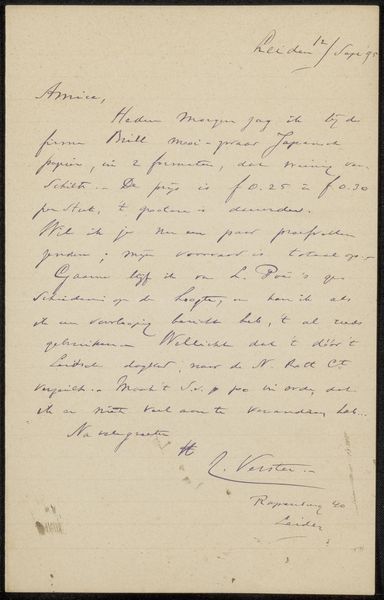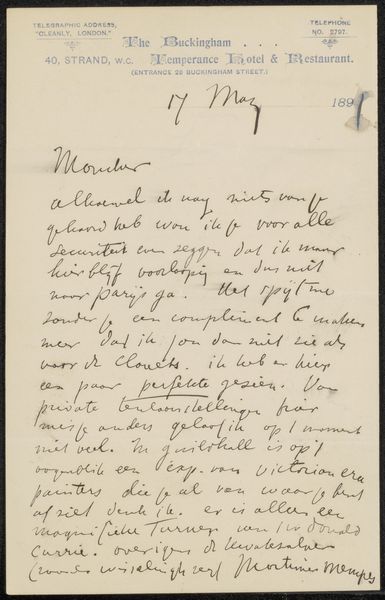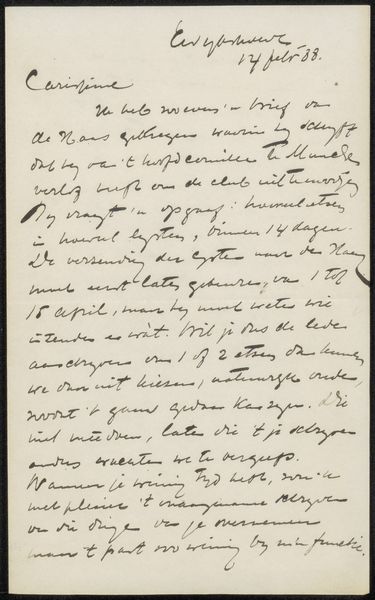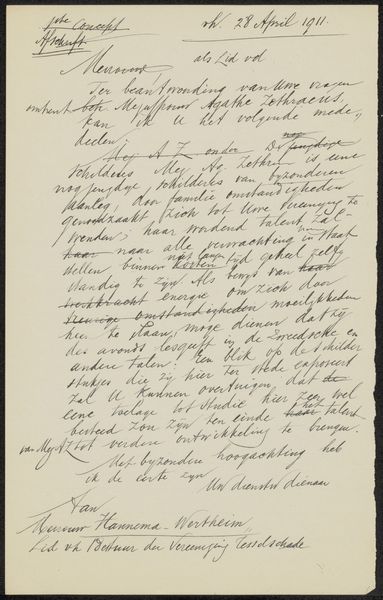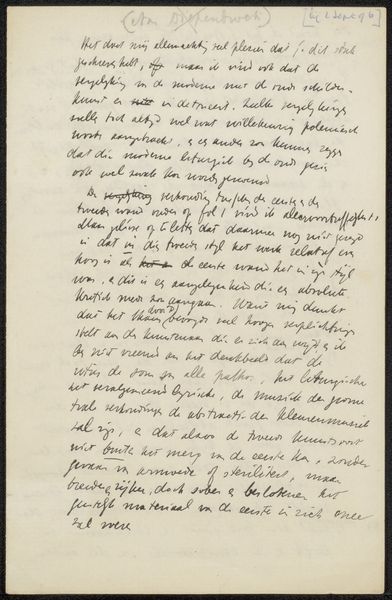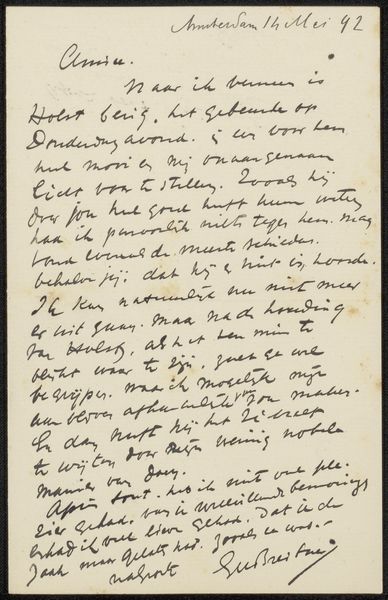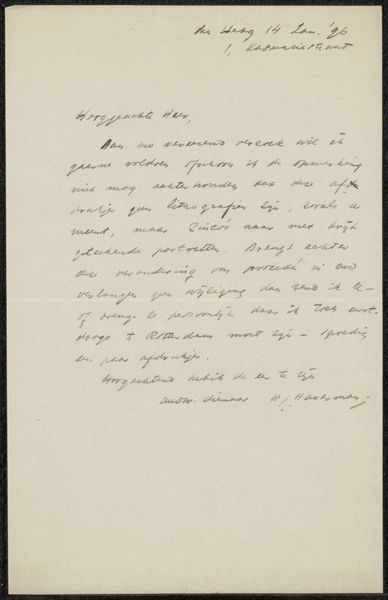
drawing, paper, ink, pen
#
drawing
#
paper
#
personal sketchbook
#
ink
#
pen
#
modernism
Copyright: Rijks Museum: Open Domain
Curator: This piece is titled "Brief aan Jan Veth," a letter by Isaac Israels dating roughly from 1875 to 1925. It's crafted with pen and ink on paper. It is currently held at the Rijksmuseum. Editor: The script gives off the impression of frantic, chaotic thought—I almost can't bear looking at the disordered, handwritten marks across the paper. How are we supposed to make heads or tails of all these squiggles and scratched out words? Curator: Think of it as less a polished statement and more a raw, unfiltered glimpse into a moment. Isaac Israels, positioned within Modernism, was engaging with ideas around shifting identities and communication in his time. The personal context—to whom is he writing and why—matters greatly. Editor: Even within its functional status as a letter, I’m drawn to the visual structure. The dark ink against the pale paper sets up this wonderful chromatic tension, which works hand in hand with the linear dynamism of the handwriting itself to really create a fascinating interplay of values and shapes. The writing fills up the entire sheet as if wanting to burst forth, the words a torrent barely contained on paper. Curator: It seems that financial matters and failed promises might have weighed heavily on the author. The repeated references to 'Cohen' and the mention of gold give a peek into some tension, maybe even betrayal—this likely speaks to issues within the late 19th-century Amsterdam art scene. It seems from context that a promised financial exchange has not materialized. We have to think of social networks that fostered patronage and the difficulties Jewish artists might have faced within those systems. Editor: It really shows what impact is achieved by manipulating formal devices like line and color, even in an ordinary format. What makes it visually captivating is this carefully managed tension that turns everyday writing into art! Curator: Yes, these personal documents help us construct narratives around class, race, and power relations—notions the artist might have internalized in subtle ways. Editor: Seeing it from your perspective has helped me see it beyond my purely aesthetic appreciation, acknowledging this artifact now as more than simply an instance of striking composition!
Comments
No comments
Be the first to comment and join the conversation on the ultimate creative platform.
